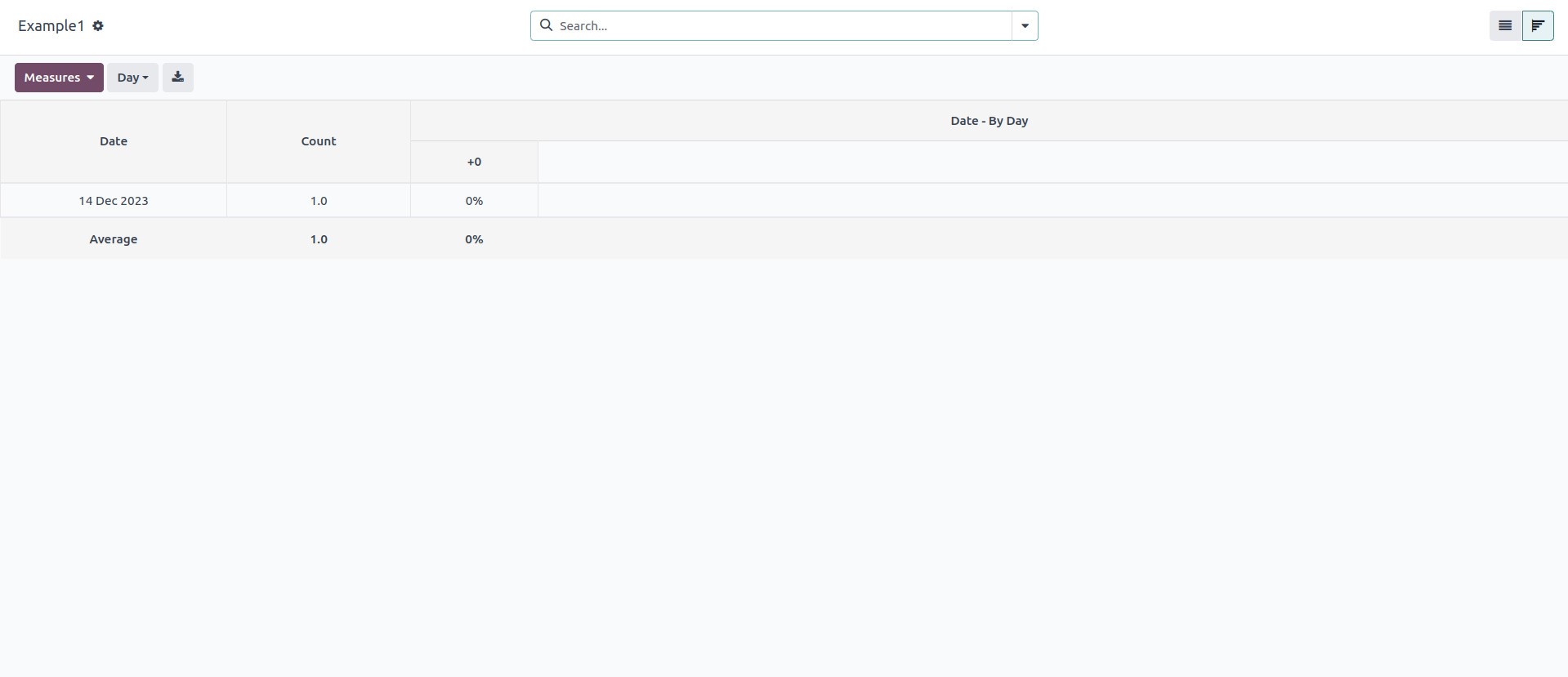The cohort view is one of the Odoo views that provides
information for the next 15 days, weeks, months, and years.
Let's look at an example to see how we can get a good data
analysis in a specific time frame.
from odoo import models, fields
class ModelExample(models.Model):
_name = 'model.example'
patient_id = fields.Many2one('hospital.patient', string="C")
name = fields.Char(string='Name')
date = fields.Date(string="Date")
attachment = fields.Binary(string="Attachment")
class HospitalPatients(models.Model):
_name = 'hospital.patient'
name = fields.Char(string='name')
dob = fields.Date(string='date')
After we've added models, we can customise their actions and
menus.
<?xml version="1.0" encoding="utf-8" ?>
<odoo>
<record id="action_Example1" model="ir.actions.act_window">
<field name="name">Example1</field>
<field name="type">ir.actions.act_window</field>
<field name="res_model">model.example</field>
<field name="view_mode">tree,form,cohort</field>
</record>
<menuitem id="model_example_menu"
name="Model Example"
parent="example_menu"
action="action_Example1"/>
We can now configure the model's cohort view.
<record id="model_example_cohort" model="ir.ui.view">
<field name="name">model.example</field>
<field name="model">model.example</field>
<field name="arch" type="xml">
<cohort string="model" date_start="date" date_stop="date" interval="day" sample="1"/>
</field>
</record>
</odoo>
Don't forget to include 'web_cohort' in the depends;
otherwise, an error will occur.
In cohort view, there are two types of modes: retention and
churn. Churn begins at zero and ends at zero. Retention will
begin at 100% and gradually decrease to zero.
The above code will produce the following result:
